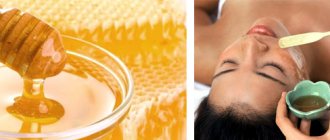The history of sandalwood oil goes back thousands of years. Sandalwood is native to the deciduous forests of Asia and Ceylon. In addition to the aroma oil itself, its wood is valued; mahogany furniture is considered one of the most expensive in the world.
Sandalwood oil is obtained by steam distillation lasting 2-3 days, while the wood is first soaked and only then subjected to high-pressure steam distillation. The result is a pale yellow liquid with a soft, refined, long-lasting aroma, including musky and sweet woody undertones.
Sandalwood oil for face is one of the main components of Ayurvedic medicine and has always been used to treat external infections and skin diseases. Modern cosmetologists widely use it in anti-aging programs, as well as in cosmetic preparations for problematic facial skin prone to rashes and acne.
Natural antiseptic
Adding sandalwood oil to the aroma lamp (at the rate of 7 drops per 15-20 sq. m) perfectly disinfects the room, and hot inhalations (3 drops of precious ether per glass of hot water) for respiratory diseases successfully suppress the development of infections.
The therapeutic effectiveness of sandalwood has been confirmed against:
- Types I and II of the herpes virus;
- Staphylococcus aureus;
- fungus Candida albicans;
- Escherichia coli, Pseudomonas aeruginosa;
- influenza A H3N2 virus.
But these are only those pathogens for which clinical studies have been conducted. Meanwhile, the thousand-year experience of using sandalwood in traditional oriental medicine indicates a much wider range of its antimicrobial activity. Thus, the use of sandalwood oil is effective for all infectious processes: it is taken internally by diluting a few drops in half a glass of warmed milk, and external use involves lotions, applications, rubbing, and massage. Moreover, sandalwood oil demonstrates effectiveness even where synthetic antibiotics, to which microbes have developed resistance, “do not work.” For example, a targeted effect in laboratory conditions of sandalwood oil on strains of Staphylococcus aureus, which is immune to methicillin, and on fungi of the genus Candida, has proven its ability to suppress the viability of these microorganisms. And similar experiments regarding the herpes virus showed a decrease in the rate of its spread by 95-99%. Let us remind you: the complete destruction of this virus in the body at the current stage of medical development is impossible, and the fight against it comes down only to the maximum containment of its vital activity. As you can see, natural sandalwood oil is very effective in this case.
Medicinal uses of sandalwood oil
Sandalwood oil is used to treat the following diseases:
- Infertility;
- Disruption of the gastrointestinal tract;
- Gallbladder problems and cholelithiasis;
- Cystitis;
- Constipation;
- Gynecological problems (this remedy is especially helpful for menstrual and menopausal problems);
- Disorders of male sexual activity;
- Hypertension and many others.
Sandalwood oil has virtually no contraindications for use as a medicinal product.
Sandalwood oil is especially often used for the prevention and treatment of colds and viral diseases of the human bronchopulmonary system. It kills influenza viruses, helps remove mucus from the bronchi and lungs, and even eliminates old coughs. To treat this type of disease, a few drops of sandalwood ether are dropped into hot milk. The drug is drunk hot. You can also add a spoonful of honey there.
Properties of sandalwood oil to help with inflammation
According to scientists, the anti-inflammatory properties of sandalwood oil are similar to those of ibuprofen and similar non-steroidal synthetic drugs, with one difference - the oil has no side effects. It is advisable to use it in therapy:
- burns;
- psoriasis;
- acne;
- eczema;
- cystitis;
- scabies;
- dermatitis, etc.
For skin inflammatory processes, the oil is applied directly to the affected area and must be mixed with another component, because the ether cannot be used undiluted. Thus, to treat acne in a clinical experiment in 2012, sandalwood oil was mixed equally with salicylic acid. After regular two-month use of this ointment, 4% of the subjects got rid of acne completely, 79% noted a significant improvement in skin condition, 89% noted a significant decrease in the number of inflammations.
When treating acne at home, you can use other mixture options for spot applications:
- Sandalwood essential oil + macadamia oil (or jojoba) 1:1.
- 1 drop of sandalwood oil, 3 drops of frankincense and vetiver + 1 tbsp. l jojoba oil.
- 2 tbsp. l green clay, 1 crushed activated carbon pill + 4 drops of sandalwood ether. Dilute the mixture with strong tea leaves to a creamy consistency, apply to the face for 20 minutes. Use this mask twice a week.
The active components of sandalwood not only eliminate inflammation and accelerate the epithelization of damage, but also have a general healing effect on the skin:
- reduce its lability to external factors;
- soothe irritation after shaving and other procedures;
- regulate the functioning of fatty glands;
- stimulate blood circulation and nutrition.
In order to enrich gels/balms for and after shaving with sandalwood oil, lotions, body milk, you need to adhere to a strict dosage: 4 drops per 5 g of base.
Local massage with the addition of sandalwood is very useful: in the kidney area it relieves genitourinary infections, on the legs it prevents varicose veins, on the lower back it treats joints and the spine. Add 8-10 drops of sandalwood to 10 ml of base massage oil.
Reviews
- Vladimir is 33 years old. About 6 months ago my back started to hurt. I immediately went to the hospital. I went through the necessary examination, but nothing was found. The doctor advised me to have a massage with sandalwood oil. I decided to take this advice. Already on the first day I was able to sleep normally, and after a week I completely forgot about the pain.
- Marina, 30 years old. A year ago, a friend told me about such a wonderful product as sandalwood oil. Since then I have been using it to care for my body and face. I'm very pleased with the effect.
- Alena, 30 years old. My husband works very hard. He barely comes home. I give him a massage with sandalwood oil. After this procedure he says that he feels much better.
Antitumor agent
There are not many sufficiently strong bioactive substances in nature that can prevent the growth of cancer cells. α-santalol contained in oil is one of them. Clinical trials have been conducted repeatedly, which have confirmed the effectiveness of sandalwood oil in the fight against skin cancer and benign neoplasms (references 1, 2). Thus, the results of experiments in 1997 on rodents (chemically induced skin cancer, local exposure to sandalwood oil) showed a reduction in tumor growth by 97%, a reduction in their number by 67%, and suppression of the activity of oncoenzymes by 70%. In 1999, it was also found that pre-application of sandalwood oil to the skin increases its resistance (compared to untreated experimental subjects) to subsequent exposure to carcinogens. In 2020, α-santalol’s ability to inhibit the development of cancer cells and even destroy them was further confirmed.
The effectiveness of sandalwood oil in the treatment of warts and other viral tumors, papillomavirus, has also been proven.
Natural cosmetologist
The addition of sandalwood oil to cosmetic products has proven itself very well, especially for oily, combination, sensitive and irritated facial skin. The bioactive components of the oil have a complex effect on the dermis:
- effectively smooth out the “mesh” around the eyes;
- tighten the facial contour;
- normalize sebum secretion;
- reduce pores and eliminate acne;
- bleach.
So, to rejuvenate the skin near the eyes and eliminate wrinkles, adding 2 drops of sandalwood and 1 drop of neroli to 10 ml of any base oil (keep the mask for 15-20 minutes) has an excellent effect. And an equal mixture of sandalwood and jojoba is an excellent lip balm that preserves their youth and protects them from dryness.
For problems with hair, dandruff, dullness, the aseptic properties of sandalwood oil are also useful. Just by enriching your shampoo or conditioner with this substance (1 drop per single portion of the product when washing), you can quickly improve your scalp, strengthen your hair, and restore its natural protection.
Recipes for homemade masks with sandalwood oil
Nourishing for dry skin of face and hands
Lightly heat the olive oil and add a few drops of sandalwood. Leave for 10 minutes, remove any remaining residue with a napkin.
Smoothing eyelid
10 ml olive oil, 3 ml wheat germ oil, 3 drops sandalwood. Soak cotton pads in the mixture and apply to eyes before bed for half an hour (do not wash after the procedure, just gently blot your eyelids with a napkin).
Rejuvenating, toning for sagging skin
2 tbsp. dilute l starch with yogurt to a mushy consistency, add 4 drops of sandalwood. Keep on face for 40 minutes.
Regenerating for nails
Sandalwood ether and olive oil 1:1. Twice a week rub into nail plates for 5 minutes. Helps with splitting, brittleness of damaged nails, and also gets rid of fungal infections.
Strengthening hair conditioner
Add 10 drops of sandalwood to a liter of warm water and rinse your hair after washing.
Repairing for damaged hair
1 yolk, 2 tbsp. l castor oil, 1 tsp honey, 1-2 tbsp. l milk powder, 2 drops each of sage and sandalwood. Distribute the mask evenly over all hair, wrap in a heated towel for 20 minutes, rinse thoroughly with shampoo.
Since the aroma of sandalwood is very persistent and reveals itself more and more over time, its trail on the skin and hair will also give a deodorizing effect.
Best aromatherapist
One of the oldest incense, sandalwood oil is effectively used in aromatherapy, and it is not for nothing that it is still popular in Eastern religions, traditional and official medicine. Its sedative effect on the psycho-emotional sphere is very effective:
- relieves nervous tension;
- relaxes;
- removes fears, irritability, nervousness;
- normalizes sleep;
- sets you up for positivity;
- copes with neuroses and depression;
- promotes concentration and clarity of thinking.
As a remedy for insomnia, sandalwood was studied by scientists in 2007 on rodents (rats). Indeed, α- and β-santalol, entering the blood through the respiratory system, have a significant sedative effect, including increasing the so-called “slow-wave sleep” stage, which is especially important for combating insomnia. Moreover, the effect was the same in all rodents – both with normal sense of smell and without it at all. That is, the point here is not in the special aromatic bouquet of sandalwood, pleasant to the senses, but in its volatile active compounds that penetrate the body.
If you have difficulty falling asleep, evening fumigation of the room with incense sticks or the use of an aroma lamp with sandalwood oil (7 drops per medium-sized room) will help. It is often recommended by psychologists and psychotherapists as a standalone drug or as part of aromatic mixtures.
In particular, sandal therapy sessions cope with mood swings during menopause and have a beneficial effect on hormonal balance and the menstrual cycle. In addition, sandalwood is a recognized adaptogen, helping to better cope with time zone changes, sudden weather changes, pressure changes, magnetic storms, and the like.
In Hinduism, precious oil is considered the best assistant for meditation, capable of restoring the aura and driving away diseases.
Features of the composition
In ancient Vedic manuscripts, which are more than 4000 years old, there are the first mentions of this unique product, which has a very rich history. Since ancient times, sandalwood oil has been used in Indian ritual rites, in medicine to heal many diseases, as well as for skin care to preserve beauty and prolong youth.
This valuable oil is extracted by conventional steam distillation, but the raw materials for its production are only old sandalwood trees, which have accumulated the largest amount of valuable components, growing in different regions of India.
The main feature of the composition of this oil is that it contains a special substance called santalol. The oil contains almost 90%. This component is one of the most powerful natural antiseptics, which has not only an antibacterial effect. The component is able to eliminate inflammation of any intensity and depth, tone the dermis, and also provide complete hydration.
In addition, sandalwood oil contains components such as santhen, santhenone, teresantalol, santalone and santolene, which significantly enhances the overall effect of the main component.
Natural sandalwood oil has a dark yellowish tint, but there are also substances of a brownish color. The consistency of the drug is very thick, and the substance has an intense, pleasant aroma, which is why it is so often used in the modern perfume industry.
Love stimulant
Sandalwood is a recognized aphrodisiac, acting on both men and women, capable of curing frigidity and impotence, stimulating and revealing the sensual facets of love. The libido-stimulating properties of sandalwood oil are also associated with the multifaceted β-santalol. The fact is that the structure of its side chain is similar to the structure of the pheromone androstenol and has a similar effect. (By the way, the same substance was found in another recognized aphrodisiac - truffles). Since it is the influence of pheromones that explains the mechanism of sensual attraction and stimulation of arousal, regulation of this influence gives therapeutic results.
You can create a romantic atmosphere with sandalwood, for example, by taking an aroma bath. To prevent the oil from collecting drops on the surface of the water, you should dilute it in a third of a glass of warm milk or soak bath salts (or even simple kitchen salts) in it. After such a bath, the sandalwood scent will emanate from the body for a long time, setting you in a loving mood.
Another way to give your skin a lasting sandalwood scent is to massage with sandalwood, and to make the fragrance of your hair irresistibly attract a man, experienced seductresses use aromatic combing with aphrodisiac oil or add sandalwood to a hair fragrance spray. By the way, it’s quite possible to “create” one of these at home yourself:
- 1/3 cup rose water (rose hydrolate);
- 1 tsp. vanilla extract;
- 5 drops each of sandalwood and ylang-ylang esters;
- 3 drops of lavender oil;
- 4 drops each of rosemary and grapefruit esters.
Stir the mixture and place in a container with a spray bottle. Spray onto hair daily or before a date, shaking the bottle first.
Another option is to permeate your bed or linen with the scent of sandalwood. Of course, you should not constantly inhale the sandalwood aroma, no matter how pleasant it may be - any ether requires caution and a clear dosage. If you “overdo it,” you may experience dizziness, nausea, and attention disorders.
Long lasting perfume
Not sharp, but the thick and dense woody-earth aroma of sandalwood is amazingly durable, and therefore has established itself as an ideal base for perfume compositions. This is perhaps the oldest component of traditional oriental perfumes, literally personifying Asian exoticism. In perfumes, sandalwood oil acts as a base, fixative and stabilizer of aroma; Arabic, chypre, and fougere compositions rarely do without it. In addition, it goes well with many other notes, although in itself it is quite bright and memorable. Today, the perfume industry uses artificial analogues of sandalwood aroma, and the natural substance can be found in soap, solid perfumes, and aroma pendants.
It’s not difficult to become a perfumer and the author of your own unique aroma bouquet, you just need to show your imagination. Solid perfume is prepared as follows: mix a teaspoon of wax and any base oil (coconut, grape seed, olive, etc.), add 25-30 drops of sandalwood oil (or any other whose smell you like). Place in suitable packaging and you're done. The scope for imagination is endless, but sandalwood will not hurt in any aroma composition, as it will give the perfume durability.
Interesting: Sandalwood oil: 7 unknown facts
Attention: allergen!
Although the World Health Organization has recognized sandalwood oil as the safest of the esters, violent individual reactions to it are not excluded. And contact with pure oil is even more dangerous - the concentrated liquid can even cause a burn.
It’s easy to check your individual oil tolerance: apply a drop of the mixture (with sunflower oil, for example) on the bend of your elbow and monitor the reaction.
An overdose of sandalwood is marked by a burning sensation of the mucous membranes in the nasopharynx, severe thirst, and sometimes nausea. It is not recommended to use sandalwood before the age of 12, and it is also better to avoid it during pregnancy.
Acute inflammatory processes in the genitourinary area are a categorical contraindication.
Legend of the East
According to Hindu beliefs, heaven has the scent of sandalwood, and in general, precious sandalwood oil and the entire plant play a key role in this religion. As you can see, such a high rating is well deserved. The disinfectant, anti-inflammatory, anti-stress, and calming properties of sandalwood oil are truly unique. For centuries it has been bringing benefits to people, which no synthetic analogue can replicate. The superiority of a natural product in restoring health and maintaining beauty is undeniable, so precious sandalwood oil remains very popular both as an element of complex therapy for a number of diseases, and as a useful and safe component in the care of beauty and youth.
Precautionary measures
If used incorrectly, sandalwood oil can be harmful. Before using this product, be sure to perform a skin sensitivity test. This ester often causes allergic reactions, so do not risk your health.
In addition, please note that external use of this ester is prohibited during pregnancy and breastfeeding. This remedy should be used very carefully in people with severe renal failure.











